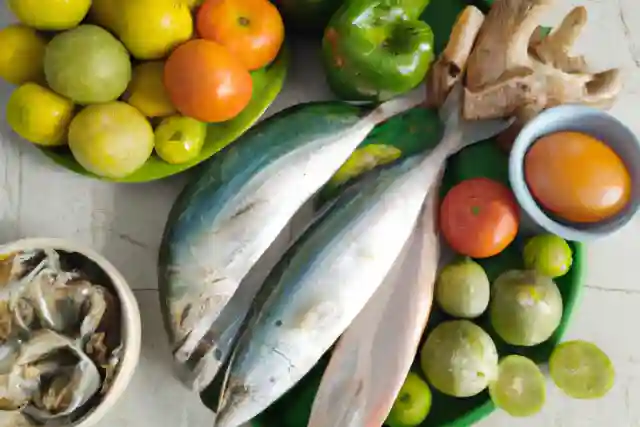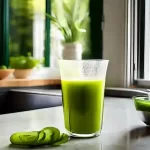Pescatarian Diet: Everything You Need to Know
If you’re considering a pescatarian diet, also known as a pesco-vegetarian or pescetarian diet, this comprehensive guide will provide you with all the information you need. Whether you’re a vegetarian or vegan looking to include fish in your diet or a meat-eater looking to eat healthier, the pescatarian diet can be a great option.
Table of Contents
- Definition and Overview
- Benefits and Risks
- Foods to Eat and Avoid
- Recipes and Meal Plans
- Tips and Advice
Definition and Overview
A pescatarian diet is a type of vegetarian diet that includes fish and seafood, but no other meats. Some pescatarians also include dairy and eggs in their diet, while others follow a strictly plant-based diet with fish and seafood as their only animal protein source.
While pescatarianism is often used interchangeably with other types of vegetarianism, it’s important to note that a pescatarian diet is not the same as a vegetarian or vegan diet, which exclude all types of animal products. The pescatarian diet has gained popularity in recent years due to its health and sustainability benefits.
Benefits and Risks
The pescatarian diet can provide a variety of health benefits, including:
- Reduced risk of chronic diseases like heart disease, type 2 diabetes, and some types of cancer
- Higher intake of omega-3 fatty acids, which are essential for brain and heart health
- Lower intake of saturated fats, which can increase the risk of heart disease
- Increased intake of protein, vitamins, and minerals
In addition to the health benefits, the pescatarian diet can also have positive effects on the environment, as seafood is generally considered a more sustainable protein source than meat. However, it’s important to be aware of the risks and concerns associated with a pescatarian diet, such as:
- Mercury poisoning from consuming high levels of mercury in certain types of fish
- Overfishing and its impact on the environment
Foods to Eat and Avoid
The pescatarian diet includes a variety of nutrient-dense foods, such as:
- Fish and seafood
- Vegetables
- Fruits
- Whole grains
- Legumes
- Nuts and seeds
On the other hand, a pescatarian diet generally excludes the following:
- Meat
- Poultry
- Red meat
- Processed foods
Recipes and Meal Plans
Following a pescatarian diet doesn’t have to be boring or restrictive. In fact, there are countless delicious and nutritious recipes and meal plans that you can enjoy, such as:
Pescatarian recipes:
- Grilled salmon with roasted vegetables
- Shrimp scampi with linguine
- Tuna poke bowl with brown rice and veggies
- Baked cod with lemon and herbs
- Seared scallops with a citrus butter sauce
- Fish tacos with mango salsa and avocado crema
Seafood recipes:
- Clam chowder
- Lobster bisque
- Crab cakes with remoulade sauce
- Grilled octopus with lemon and garlic
- Cioppino (a seafood stew)
- Paella with shrimp, mussels, and clams
Vegetarian recipes (for those who don’t eat fish every day):
- Lentil and vegetable soup
- Spinach and feta stuffed portobello mushrooms
- Roasted vegetable lasagna
- Black bean and sweet potato enchiladas
- Tofu stir-fry with vegetables and rice noodles
- Falafel with hummus and veggies in a pita
Meal plans:
- 7-day pescatarian meal plan with breakfast, lunch, dinner, and snacks
- 2-week seafood-based meal plan with a focus on variety and nutrition
- 30-day plant-based meal plan that incorporates fish twice a week
Breakfast recipes:
- Smoked salmon and cream cheese on a bagel
- Shrimp and vegetable omelets
- Avocado toast with poached eggs and smoked trout
- Tuna melt on an English muffin
- Crab and asparagus frittata
- Salmon and spinach quiche
Lunch recipes:
- Lobster roll on a buttered bun
- Shrimp and avocado salad with citrus dressing
- Tuna salad with celery and red onion on whole grain bread
- Smoked salmon and cucumber tea sandwiches
- Clam and corn chowder with crusty bread
- Crab and mango summer rolls
Dinner recipes:
- Pan-seared halibut with cherry tomatoes and basil
- Baked salmon with dill and lemon
- Coconut shrimp curry with vegetables and rice
- Scallops and linguine with garlic and white wine sauce
- Grilled swordfish with a pineapple salsa
- Lobster tail with drawn butter and asparagus
Snack recipes:
- Shrimp cocktail with homemade cocktail sauce
- Smoked salmon and cream cheese dip with crackers
- Tuna and white bean dip with veggies for dipping
- Crab and artichoke dip with pita chips
- Sardines and crackers with mustard and sliced tomato
- Fish jerky made from salmon, tuna, or other fish
Tips and Advice
If you’re new to the pescatarian diet, there are some helpful tips and advice that can make the transition easier, such as:
- How to start a pescatarian diet: If you’re new to the pescatarian diet, start by gradually incorporating seafood into your meals. You can begin by replacing one or two meat-based meals per week with fish or seafood, and gradually increase the frequency as you become more comfortable. Experiment with different types of fish and seafood to find what you like.
- Grocery shopping tips: When shopping for pescatarian-friendly foods, look for fresh fish and seafood, as well as plant-based foods like fruits, vegetables, grains, and legumes. Be sure to read labels and check for added ingredients, such as preservatives and additives, that may not align with your dietary preferences.
- Dining out tips: When dining out, look for restaurants that offer seafood dishes or pescatarian-friendly options. You can also ask your server for recommendations and request modifications to dishes to make them pescatarian-friendly.
- Meal prep tips: Meal prep is a great way to ensure you have pescatarian-friendly meals throughout the week. Try incorporating a variety of fish and seafood, as well as plant-based foods, into your meal prep. Use herbs, spices, and other flavorings to add variety to your meals.
- Protein sources: Fish and seafood are excellent sources of protein for pescatarians. Some fish and seafood that are particularly high in protein include salmon, tuna, shrimp, and crab. Plant-based protein sources, such as beans, lentils, and tofu, can also be included in a pescatarian diet.
- Iron sources: Iron is an important nutrient that can be found in both fish and seafood, as well as plant-based foods like leafy greens, beans, and fortified cereals. To increase iron absorption, pair iron-rich foods with foods that are high in vitamin C, such as citrus fruits and bell peppers.
- Calcium sources: Calcium is important for maintaining strong bones and teeth, and can be found in fish with soft bones, such as sardines and salmon, as well as in plant-based foods like leafy greens, broccoli, and fortified plant milks.
- B12 sources: Vitamin B12 is essential for nerve and red blood cell health, and is typically found in animal products. Pescatarians can get B12 from fish and seafood, as well as fortified plant milks, nutritional yeast, and B12 supplements.
- Fish oil supplements: Fish oil supplements can be a good source of omega-3 fatty acids, which are important for heart health and brain function. However, it’s important to choose a high-quality supplement that has been tested for purity and contaminants. As with any supplement, consult with a healthcare professional before starting a fish oil supplement.
By following these tips and incorporating a variety of nutrient-dense foods into your pescatarian diet, you can ensure that you’re getting all the essential nutrients your body needs.







